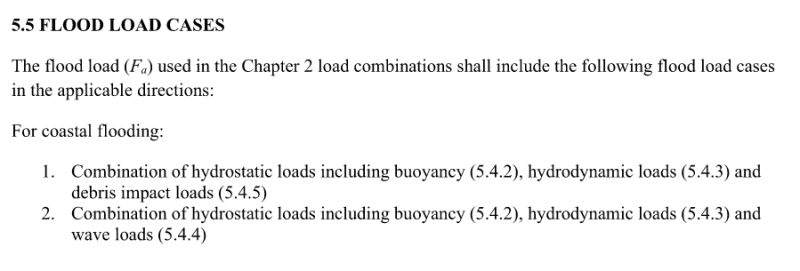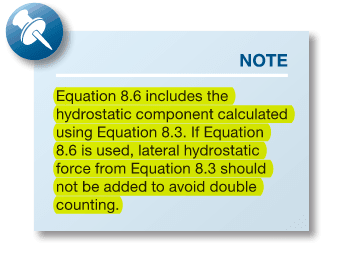Nick6781
Structural
- May 15, 2024
- 30
I'm designing a solid concrete flood wall. I've looked through FEMA P-55 but still have questions on how to combine different flood load cases.
For one case, I think I need to combine hydrostatic + hydrodynamic + impact.
But how should I combine the loads when there is breaking wave? The breaking wave equation has baked-in hydrostatic pressure based on still water height rather than the (DFE - grade) height. Should I do hydrostatic + breaking wave + impact or just breaking wave + impact?
I'm attaching a screenshot from FEMA P-55.

For one case, I think I need to combine hydrostatic + hydrodynamic + impact.
But how should I combine the loads when there is breaking wave? The breaking wave equation has baked-in hydrostatic pressure based on still water height rather than the (DFE - grade) height. Should I do hydrostatic + breaking wave + impact or just breaking wave + impact?
I'm attaching a screenshot from FEMA P-55.



